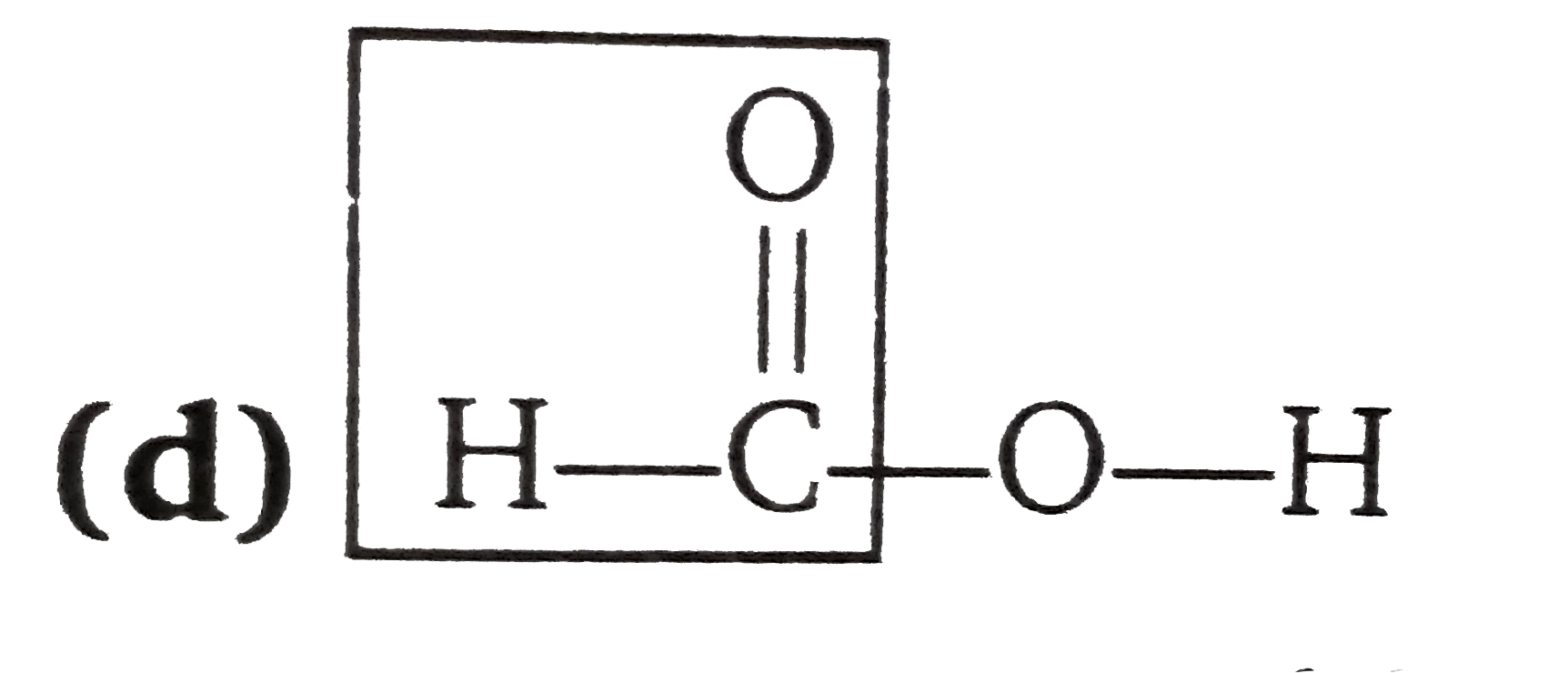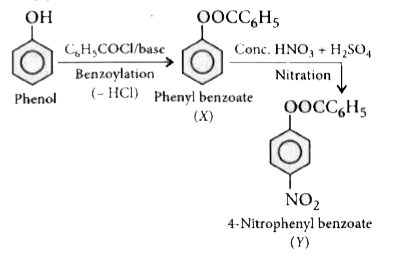InterviewSolution
This section includes InterviewSolutions, each offering curated multiple-choice questions to sharpen your knowledge and support exam preparation. Choose a topic below to get started.
| 5051. |
Which of the following alcohol is secondary (2^(@)) alcohol ? |
|
Answer» ISOBUTYL alcohol 
|
|
| 5053. |
Writenames of monomer/s of the followingand classify them as addition or condensation polymers . (a) Teflon(b) Bakelite. (c) Natural Rubber . |
|
Answer» Solution :(a) MONOMER of teflon is tetrafluoroethylene `(CF_(2) = CF_(2))` . It is anaddition polymer. (b) Monomersof bakeliteareformaldehydeand phneol. Itis ca condensationpolymer. (C) Monomer of natural rubberis ISOPRENE (2- methyl -1,3-butadiene( . It isan ADDITION polymer. |
|
| 5054. |
What is the [H^(+)] in a 0.40 M solution of HOCl, K_(a)=3.5xx10^(-8)? |
|
Answer» `1.4xx10^(-8)M` `=sqrt(3.5xx10^(-8)xx0.4)` `=sqrt(140xx10^(-10))` `=12XX10^(-5)` `=1.2xx10^(-4)` |
|
| 5055. |
Which of the following statements are not true? |
|
Answer» VACANCY defect results in a decrease in the density of the substance. Ex. : Addition of `SrCl_2` to `NACL` crystal. Frenkel defect cause no change in the density |
|
| 5056. |
Which one of the following is an example of co-polymer? |
|
Answer» Buna-S |
|
| 5057. |
Which of the following order of relative strength of acid is correct ? |
|
Answer» `F - CH_(2) - COOH gt Cl CH_(2) COOH gt Br - CH_(2) - COOH gt CH_(3) COOH` |
|
| 5058. |
Tin reacts with conc. H_2SO_4 to give: |
|
Answer» STANNIC acid |
|
| 5059. |
Which one is a test for proteins: |
|
Answer» Brillstein test |
|
| 5060. |
Write the structures of the compound whose IUPAC names are as follows: (i) 2-Methylbutan-2-ol (ii) 1-Phenylpropan-2-ol (iii) 3,5-Dimethylhexane-1,3,5-triol (iv) 2,3-Diethylphenol (v) 1-Ethoxypropane (vi) 2-Ethoxy-3-methylpentane (vii) Cyclohexylmethanol (viii) 3-Cyclohexylpentan-3-ol (ix) Cycopent-3-en-1-ol (x) 5-Chloromethylpentan-1-ol. |
Answer» SOLUTION :
|
|
| 5061. |
Write the mathemtatical expression for limiting molar conductivity of sodiumm chloride [NaCI]. |
| Answer» SOLUTION :`lamda_(NACI)^(@) = lamda_(NA^+)^(@) + lamda_(CI^-)^(@)` | |
| 5062. |
The wt. of unhydrous sodium carbonate needed to prepare 500 ml of a decinormal solution would be |
|
Answer» 5.3 g `= 0.1 xx 53 = 5.3 g` Wt. in 500 ml `= (5.3)/2= 2.65 g. |
|
| 5063. |
Zinc reacts with hot and concetrated H_(2)SO_(4) to give |
|
Answer» `H_(2)` `underset("sulphuric acid")underset("(conc.)")(Zn+2H_(2)SO_(4))overset(DELTA)rarrunderset("zink sulphate")(ZnSO_(4))+2H_(2)O+underset("sulphur dioxide")(SO_(2))` |
|
| 5064. |
The value of K_b is highest in case : |
|
Answer» p-methoxy aniline |
|
| 5065. |
Which gives least basic oxide? |
|
Answer» Mg |
|
| 5066. |
Which vitamin deficiency leads to the disease megaloblastic anaemia? |
|
Answer» vitamin`B_(9)` |
|
| 5067. |
What is the pH value of 0.1(M) HCOOH solution if its ionisation constant, K_ is 1.78xx10^(-4) at 25^(@)C ? How much water is to be added to 1L of this solution so that the pH of the solution becomes double of its initial value? |
|
Answer» Solution :100 ML. 0.075 (M) Ca`(OH)_2` `=2xx(0.075)/(1000)xx100-=0.015mol OH^-` 100 mL of 0.1(M) `HCL-=(0.1)/(1000)xx100-=0.1mol` of `H^+` ions 0.01 mol of `H^+` ions react completely with the same amount of `OH^-` ions and the solution contains (0.015-0.01) mol =0.005 mL of `OH^-` ions `:.` In the solution `[OH^-]=(0.005)/(200)xx1000=0.025(M)` `:.` POH of the solution `=-log_(10)(0.025)=1.6` `:.` pH of the solution `=-log_(10)(0.025)=1.6` |
|
| 5068. |
When initial concentration of a reactant is doubled in a reaction, the half-life period is not affected. The order of reaction is |
|
Answer» second `(t_(1//2) = (0*693)/(K))` |
|
| 5069. |
The type of bond formed between H^+ and NH_3 in NH_4^- ion is: |
|
Answer» Ionic |
|
| 5070. |
Which of the following compounds is square planar and does have any unpaired electron? |
|
Answer» `NI(CO)_(4)`  Therefore, hybridisation is `DSP^(2)`, structure is square plnar and it is diamagnetic. |
|
| 5071. |
Which of the following ions can be separated by using dil. HCI? |
|
Answer» `Ag^(+)` and `Cu^(+2)` |
|
| 5072. |
Write the IUPAC name of K_3[Fe(CN)_6] ,[Co(NH_3)_6]Cl_3 |
| Answer» SOLUTION :Potassiumhexacyanoferrate(III)HEXAAMMINECOBALT(III)CHLORIDE | |
| 5073. |
Which among the following has the highest pH? |
|
Answer» `1 M" "NH_4 OH` |
|
| 5074. |
Which of the following is the soft base? |
|
Answer» `CO_(3)^(2-)` ION :CO |
|
| 5075. |
Which stoichiometric defect decreases the density of the crystal? |
|
Answer» Schottky |
|
| 5076. |
Which of the following is vinylic halide ? |
|
Answer» `H_(3)C-CH=underset("BR ")underset("| ")("C ")-CH_(2)-underset(CH_(3))underset("|")("C ")H-CH_(3)` |
|
| 5077. |
Which of the following compounds does not contain an- OHgroup ? |
|
Answer» Alcohol |
|
| 5078. |
The two type of bonds present in B_2H_6 are covalent and : |
|
Answer» Ionic |
|
| 5079. |
Which of the following acid give positive Tollen's reagent test. |
|
Answer»

|
|
| 5080. |
Which of the following compounds will dissolve in an alkali solution after it has undergone reaction with Hinsberg reagent? |
|
Answer» `(C_(2)H_(5))_(2)NH` |
|
| 5081. |
What are emulsions ? Give an example of an emulsion. |
|
Answer» Solution : (a) Emulsions. A colloidal dispersion of one liquid in another liquid is called EMULSION. The two liquids used for making emulsions are IMMISCIBLE with each other. For example, milk is emulsion in which liquid fat is DISPERSED in water. (b) Classification of emulsions. Emulsions are of two types: (i) Oil-in-water emulsions. In this type of emulsion, the dispersed phase is oil and dispersion MEDIUM is water. For example, milk is an example of soluble fats in water. Other examples are vanishing cream. (II) Water-in-oil emulsions. In this type of emulsion, the dispersed phase is water and the dispersion medium is oil. For example, butter is an example in which water is dispersed in oil. Other examples are cold cream, cod liver oil, etc. |
|
| 5082. |
Write the complete nuclear reaction, (i) _(92)^(235)U+_(0)^(1)nto_(38)^(92)Sr+Xe+3_(0)^(1)n (ii) _(92)^(235)U+_(0)^(1)nto………………+_(52)^(137)Tc+_(40)^(97)Zr (iii) _(34)^(86)Se+to……………….2_(-1)^(0)e |
|
Answer» `(ii) 2_(0)^(1)n` `(iii)""_(36)^(86)Kr` |
|
| 5083. |
Write three distinct differences between physical adsorption and chemisorption. |
Answer» SOLUTION :
|
|
| 5084. |
What is vulcanisation ? |
| Answer» Solution :Vulcanisation is a process of HEATING natural rubber with elemental SULPHUR or sulphur COMPOUNDS which give greater tensile STRENGTH and elasticity to the rubber. | |
| 5085. |
Which defect increases the density of a crystal lattice ? |
|
Answer» VACANCY |
|
| 5086. |
Y is |
|
Answer»

|
|
| 5087. |
What is orlon? |
| Answer» SOLUTION :It is POLYMER of ACRYLONITRILE. | |
| 5088. |
Which of the following is ann oxidizing agent? |
|
Answer» `MN(CO)_(5)` |
|
| 5089. |
Which among the following is very strong o-p-directing groups? |
|
Answer» `-CL` |
|
| 5090. |
The standard emf of a galvanic cell involving cell reaction with n = 2 is found to be 0.295 V at 25^(@)C. The equilibrium constant of the reaction would be |
|
Answer» `2.0xx10^(11)` |
|
| 5091. |
Which of the following complex(s) will have blue colour solution or ppt ? |
|
Answer» `[Cu(NH_(3))_(4)]SO_(4)` |
|
| 5093. |
Which of the following solids is a covalent crystal ? |
|
Answer» SODIUM chloride |
|
| 5094. |
The work done by a weightless piston in causing an expansion triangleV( at constant temperature), when the opposing pressure, P is variable, is given by: |
|
Answer» `W=-intPtriangleV` |
|
| 5095. |
Write the complete nuclear reactions : ltbr. a.._(4)Be^(9)+ ._(9)He^(4) rarr._(6)C^(12)+................... b.._(1)H^(3)rarr ._(2)He^(3)+.............. c. ._(7)N^(14)+._(2)He^(4)rarr ._(8)O^(17)+......... d. ._(92)U^(235)+._(0)n^(1) rarr ._(38)Sr^(92)+....Xe3._(0)n^(1) e. ._(3)Li^(7)+ ._(0)n^(1)rarr2 ._(2)He^(4+).......... f. ._(92)U^(238)+........rarr._(92)U^(239)rarr._(93)Np^(239)+.... g. ._(7)N^(14)+._(0)n^(1)rarr ._(1)H^(3)+.......... h. ._(3)Li^(7)+............. rarr._(4)Be^(8)+gamma- radiations i.._(1)H^(2)+............ rarr ._(2)He ^(4)+._(0)n^(1) |
|
Answer» |
|
| 5096. |
Two liquids X and Y form an ideal solution. At 300 K, vapour pressure of the solution containing 1 molof X and 3 mol of Y is 550 mm Hg. At the same temperature if 1 mol of Y is further added to this solution, vapour pressure of the solution increases by 10 mm Hg. Vapour pressure (in mm Hg) of X and Y in their pure states will be respectively |
|
Answer» 200 and 300 `P_("total")=x_(X)xxp_(X)^(@)+x_(Y)xxp_(Y)^(@)` i.e., `550=0.25p_(X)^(@)+0.75p_(Y)^(@)` `"or"2200=p_(X)^(@)+3p_(Y)^(@)"...(i)"` After adding 1 mol of Y, `x_(X)=(1)/(5)=0.20, x_(Y)=0.80` `THEREFORE""560=0.20p_(X)^(@)+0.80p_(Y)^(@)` `"or"2800 = p_(X)^(@)+4p_(Y)^(@)"...(ii)"` Solving the two EQUATIONS, we get `p_(Y)^(@)=600mm, p_(X)^(@)=400mm` |
|
| 5097. |
Which one of the following does not undergo iodoform reaction |
|
Answer» SECONDARY butylalconol 
|
|
| 5098. |
Two reactants R_(1) and R_(2) have identical pre-exponential factors . Activation energy of R_(1) exceeds that of R_(2) by 10 kJ mol^(-1) . If k_(1) and k_(2) are rate constants for reaction R_(1) and R_(2) respectively at 300 K , then Ln(k_(2)//k_(1)) is equal to : ( R = 8.314 J mol^(-1) K^(-1)) |
|
Answer» 12 Ln `((k_(2))/(k_(1))) = (10)/(RT) = (10)/(8.314 xx 10^(-3) xx 300) = 4` |
|
| 5099. |
Whatis VanArkelmethodofobtainingultrapuremetals ? |
|
Answer» Solution :The impuremetal (TI orZr) isfirstconvertedintoitsvolatile iodilebyheatingwith ` I _2`at somelowtemperature. Thevolatile iodidethusformedisseparated fromimpurities.It isdecomposedatasuitable high temperatureto givethepuremetal. Forexample, `underset (("Impure"))(Zr (s)) +2 I_2 (G) overset(870 K ) toZrl_4 (g)overset (2075 K )underset ("W filament") tounderset (("PURE"))(Zr(s)) +2I_2 (g) ` |
|
| 5100. |
Which is the correct for radius of atom in ccp unit cell? |
|
Answer» `R = 1/(2sqrt(2)) cdot a` |
|